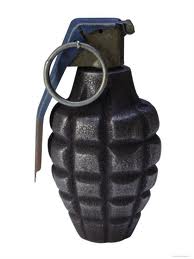 Two decades ago, when I was teaching a poetry writing workshop or two every semester, I usually spent a whole class focusing on compression and control, emphasizing how a meticulously designed small poem could, metaphorically, explode once its precise and carefully orchestrated language connects with a reader’s mind. The class might examine Roethke’s “I Knew a Woman” or Plath’s “Ariel” to discover how many nuanced allusions were activated once we considered secondary meanings and the contexts we usually associated with the “loaded” language. It’s an important point: if a poet has any hope of directing his reader’s imagination, she must sift through the available vocabulary and select words that are precise but radiant. The figure of a stone striking a pool is relevant here, the implications rippling out.
Two decades ago, when I was teaching a poetry writing workshop or two every semester, I usually spent a whole class focusing on compression and control, emphasizing how a meticulously designed small poem could, metaphorically, explode once its precise and carefully orchestrated language connects with a reader’s mind. The class might examine Roethke’s “I Knew a Woman” or Plath’s “Ariel” to discover how many nuanced allusions were activated once we considered secondary meanings and the contexts we usually associated with the “loaded” language. It’s an important point: if a poet has any hope of directing his reader’s imagination, she must sift through the available vocabulary and select words that are precise but radiant. The figure of a stone striking a pool is relevant here, the implications rippling out.
I know this suggests meditation and revision and may not be persuasive to poetizers who believe that the spontaneity of feeling in a poem is its most cathartic ingredient, the sincerity of the feeling the essence of poetry, and since “expression that heals” is central to some current aesthetics, my design idea will probably have opposition, but I haven’t changed my mind about the concept.
What I have changed my mind about is the prop I employed to make my point. Into the workshop I would bring a paper bag, from which, at the right moment, I would lift a hand grenade. Unthinkable today, but back when almost no one imagined that mayhem in a classroom was a realistic possibility, no one ever complained, and I was persuaded that, if any student experienced a moment of anxiety, it would be dispelled (and erased) as soon as I explained that disarmed grenades could be purchased at most military surplus stores. I’d stick my pencil into the bottom end of the grenade (think “pomegranate”) to show that the core was hollow, then proceed to pass it around, letting the students see how the metal was divided into measured sections (think “pineapple”) to control the shrapnel pattern (I may have even said “kill zone”) once the pin was pulled, the spoon lifted and the explosive charge set off. Then, back to the poem, which has to be constructed with considerations of impact pattern. Word associations don’t radiate as symmetrically or predictably as the pieces of a hand grenade, but the metaphor seemed persuasive.
Shift from dummy ordnance and lightweight semantic theory to Frost’s “Design” or Bishop’s “First Death in Nova Scotia” and see how carefully the words have been chosen, how assertively the poet presides over syntax and juxtaposition. A good lesson, and years after graduation former students would see me and say they always remembered the grenade day and could still picture my prop (which I eventually painted orange, to diminish its lethal look), always there to remind them that compression and design are essential to the craft of writing.
Today, I wouldn’t even consider bringing a decommissioned grenade or even a plastic one to a class, though I might show students an image of one on a website. That three-dimensional impact that I wanted could, in contemporary context, seem like a threat, an act of terrorism. Who knows how a students would react to even a toy weapon in class? I know I’m no longer eager to see one in that setting, metaphor or not.
In fact, considerations of weaponry still enter the classroom in various ways. Some courses – in law, in history – are appropriate venues for conversations about the legality, morality and sometime necessity of firearms. Many literature classes discuss people with guns – from Pierre and his pistol in War and Peace to the various weapons in McCarthy’s The Road. We discuss their actions and motives as means of exploring their personalities and communities. Furthermore, our vocabulary is permeated with language from the world of guns – lock stock and barrel, trigger, set your sights on, go off half-cocked, on target, shoots that idea down, a rapid-fire discussion, going ballistic, locked and loaded, flash in the pan, keep your powder dry, no silver bullet, a shot across the bow, bite the bullet, open season, loose cannon.
These are not now (if they ever were) benign metaphors, and when I hear or say these words now, I imagine them in boldface italics, their associations having grown exponentially in recent months. But even the network news personnel reporting on gun violence slip right into them, which makes me hope they each do a little double-take in the second afterwards, flinch a little and remember that words have power and should be employed purposefully and not by habit.
Beyond the radius of deadly metal, a hand grenade does damage through concussion (L: concutere, to shake violently; or concussus, action of striking together). The riven air can do as much damage as a diving linebacker’s helmet, and I think many of us not directly hit by the recent murders by guns are reeling a vbit from the shock waves. Just as I no longer can or want to bring my disarmed grenade to class, we all need to rethink our actions and language, to find the wisest and safest ways to go forward in this more dangerous world.

